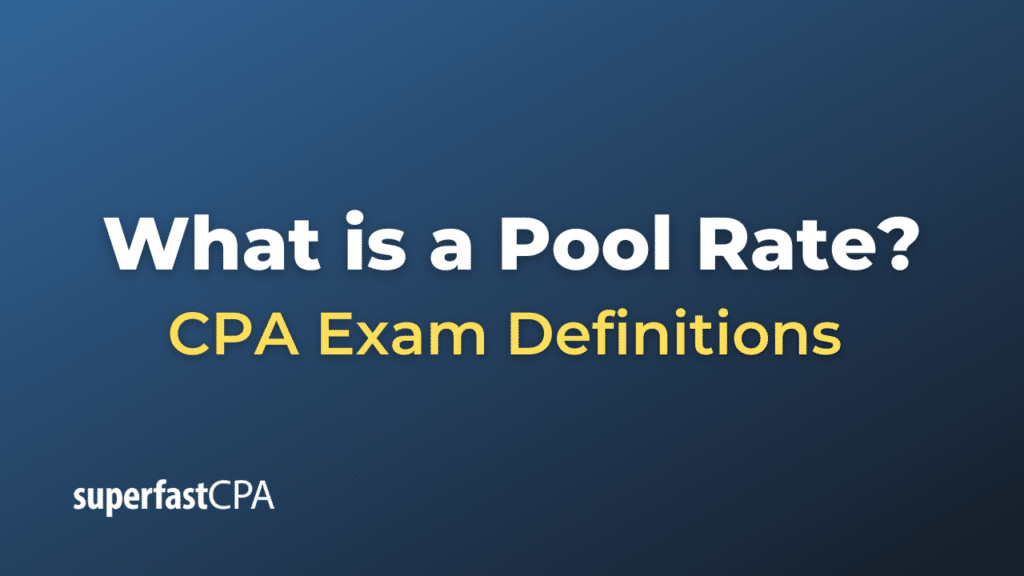Pool Rate
In the context of cost accounting and financial management, a pool rate, also known as an overhead absorption rate, is a method used to apply the cost of overhead to specific items, products, or services. It’s calculated by dividing the total overhead costs in an overhead cost pool by the total amount of cost driver activity.
Overhead costs are the indirect costs that cannot be directly assigned to a specific product or job. Examples include rent, utilities, and administrative salaries. These costs are often pooled together and then allocated to products or services based on a relevant cost driver such as machine hours, labor hours, or units produced.
For example, if a company has $100,000 in overhead costs for a year, and the total machine hours worked for that year is 20,000 hours, then the overhead pool rate would be $5 per machine hour ($100,000/20,000 hours). This means that for every machine hour worked, the company would allocate $5 of overhead costs to the product being manufactured.
Pool rates help companies more accurately reflect the cost of producing a product or delivering a service, which can aid in pricing decisions, profitability analysis, and financial reporting.
Example of a Pool Rate
Let’s consider a manufacturing company, Stellar Manufacturing Co., which makes a variety of widgets. To allocate their overhead costs, they decide to use machine hours as the cost driver because most of their overhead costs come from running the machines to produce their widgets.
Let’s say their overhead costs include items such as factory rent, utilities, and machine maintenance, which for a particular year total up to $500,000. In that same year, they logged 10,000 machine hours to produce their widgets.
To calculate their pool rate, they would divide the total overhead cost by the total machine hours:
$500,000 ÷ 10,000 machine hours = $50 per machine hour
So, Stellar Manufacturing Co. would allocate $50 of overhead costs for every machine hour worked when determining the cost of each widget.
If a particular widget requires 5 machine hours to produce, the overhead cost assigned to that widget would be $250 (5 hours * $50 per hour).
This method gives Stellar Manufacturing a more accurate picture of the true cost of producing each widget when overhead costs are considered, aiding in pricing and profitability analysis.













